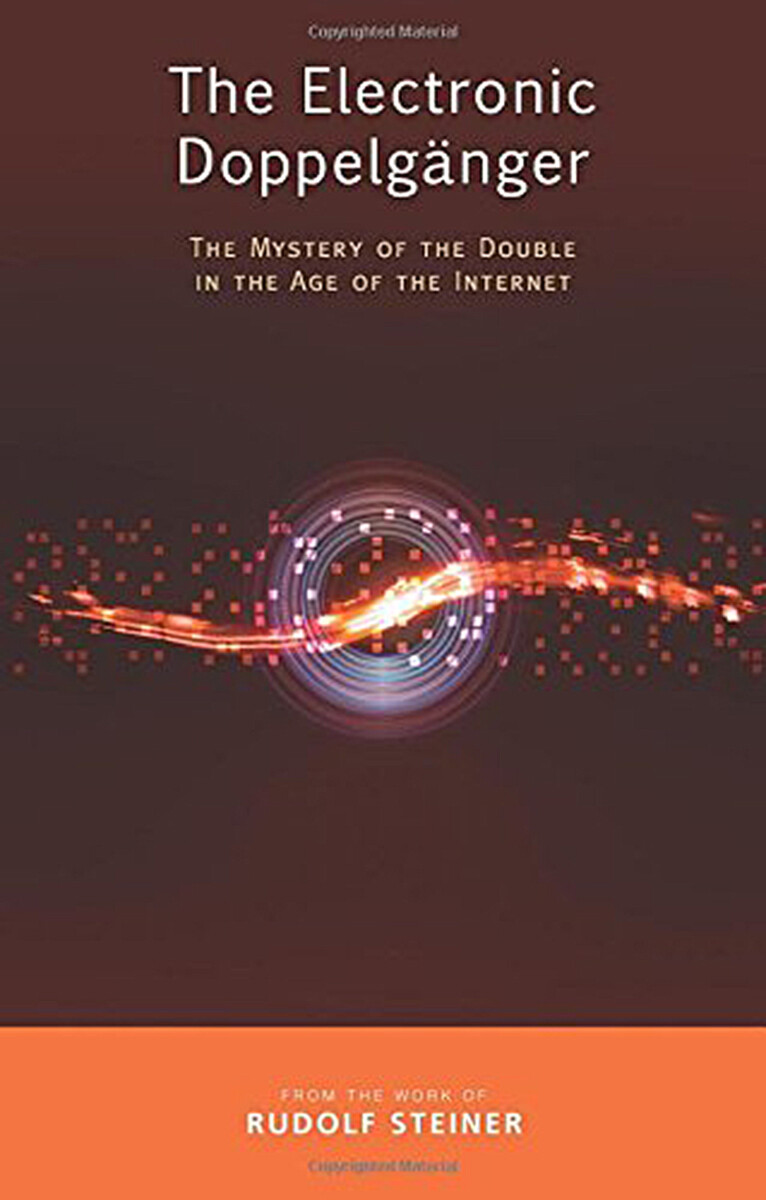The Electronic Doppelgänger
The Mystery of the Double in the Age of the Internet
Afterword by Andreas Neider
Introduction by Andreas Neider
Edited by Andreas Neider
Translated by Simon Luke Breslaw
- Publisher
Rudolf Steiner Press - Published
8th July 2016 - ISBN 9781855845251
- Language English
- Pages 164 pp.
- Size 5.5" x 8.5"
A compilation of lectures
"Large temptations will emanate from these machine-animals, produced by people themselves, and it will be the task of a spiritual science that explores the cosmos to ensure all these temptations do not exert any damaging influence on human beings." — Rudolf Steiner
In an increasingly digitized world, where both work and play are more and more taking place online and via screens, Rudolf Steiner’s dramatic statements from 1917 appear prophetic. Speaking of "intelligent machines" that would appear in the future, Steiner presents a broad context that illustrates the multitude of challenges human beings will face. If humanity and the Earth are to continue to evolve together with the cosmos, and not be cut off from it entirely, we will need to work consciously and spiritually to create a counterweight to such phenomena.
In the lectures gathered here, edited with commentary and notes by Andreas Neider, Rudolf Steiner addresses a topic that he was never to speak of again—the secret of the geographical, or ahrimanic, Doppelgänger. The human nervous system houses an entity that does not belong to its constitution, he states. This is an ahrimanic being that enters the body shortly before birth and leaves at death, providing the basis for all electrical currents needed to process and coordinate sensory perceptions and react to them.
Based on his spiritual research, Steiner discusses this Doppelgänger, or double, in the wider context of historic occult events relating to spirits of darkness. Specific brotherhoods seek to keep such knowledge to themselves to exert power and spread materialism. But this knowledge is critical, says Steiner, if the geographical Doppelgänger and its challenges are to be understood.
Originally published in German as Der Electronische Doppelgänger (Rudolf Steiner Verlag, 2013).
Rudolf Steiner
Rudolf Steiner (b. Rudolf Joseph Lorenz Steiner, 1861–1925) was born in the small village of Kraljevec, Austro-Hungarian Empire (now in Croatia), where he grew up. As a young man, he lived in Weimar and Berlin, where he became a well-published scientific, literary, and philosophical scholar, known especially for his work with Goethe’s scientific writings. Steiner termed his spiritual philosophy anthroposophy, meaning “wisdom of the human being.” As an exceptionally developed seer, he based his work on direct knowledge and perception of spiritual dimensions. He initiated a modern, universal “spiritual science” that is accessible to anyone willing to exercise clear and unbiased thinking. From his spiritual investigations, Steiner provided suggestions for the renewal of numerous activities, including education (general and for special needs), agriculture, medicine, economics, architecture, science, philosophy, Christianity, and the arts. There are currently thousands of schools, clinics, farms, and initiatives in other fields that involve practical work based on the principles Steiner developed. His many published works feature his research into the spiritual nature of human beings, the evolution of the world and humanity, and methods for personal development. He wrote some thirty books and delivered more than six thousand lectures throughout much of Europe. In 1924, Steiner founded the General Anthroposophical Society, which today has branches around the world.


